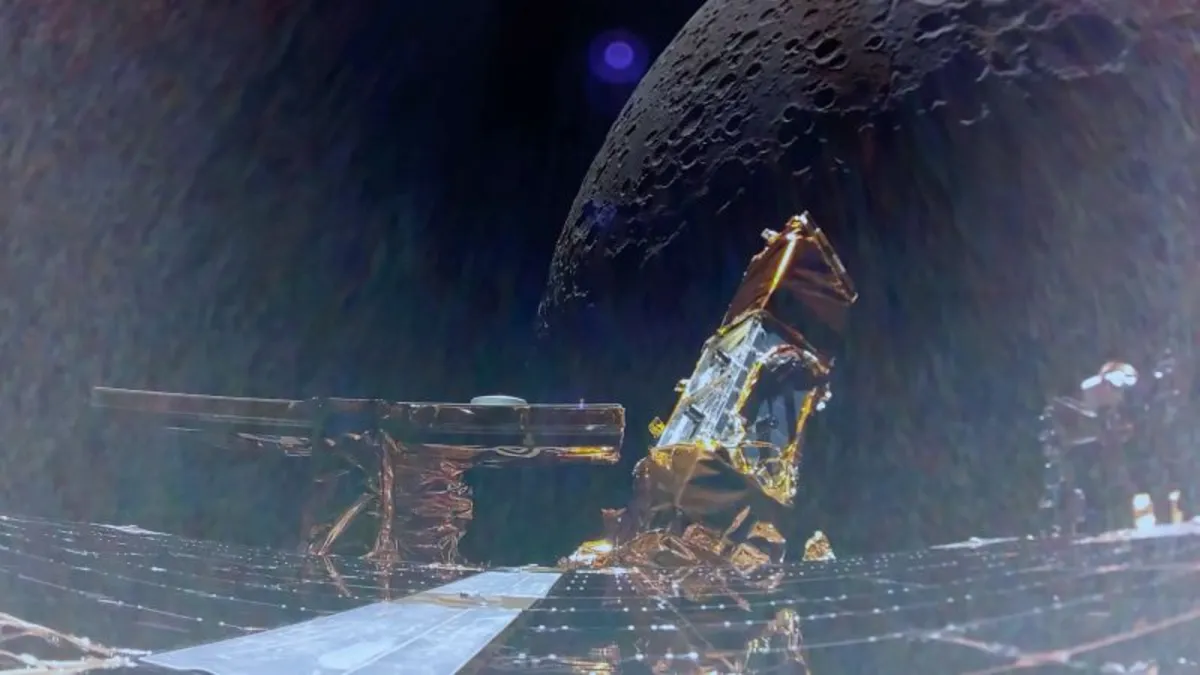
Sign up for CNN’s Wonder Theory science newsletter and delve into the universe with updates on intriguing discoveries, groundbreaking scientific advancements, and much more. One of the latest milestones in lunar exploration comes from the Blue Ghost lunar lander, which has been providing breathtaking visuals of the Moon since it successfully entered lunar orbit on February 13.
The recent footage captured by the Blue Ghost lunar lander showcases a close-up view of the Moon’s far side, a region that remains hidden from Earth. This remarkable imagery was taken after the lander shifted from a high elliptical orbit to a lower elliptical orbit, approximately 120 kilometers (74.6 miles) above the lunar surface. This announcement was made last week by Firefly Aerospace, the Texas-based company responsible for the mission.
Along with the stunning flyby footage that highlights the Moon's rugged landscape, which is marked by impact craters, the spacecraft also recorded incredible images of the lunar south pole. “The latest Moon footage captured by Firefly’s Blue Ghost lunar lander is completely surreal,” said Joseph Marlin, the deputy chief engineer for Blue Ghost, in an email. “We had an idea of how the imagery would look, but seeing the actual footage of the Moon’s craters and boulders from our own spacecraft is incredibly inspiring and emphasizes how close we are to our ultimate destination after all the hard work we’ve put into this mission.”
The private US spacecraft departed from Earth’s orbit on February 8, embarking on a days-long journey to reach the Moon. NASA states that the average distance from Earth to the Moon is about 238,855 miles (384,400 kilometers). Currently, Blue Ghost is approximately halfway through its 16-day lunar orbit and is set to attempt a descent to the Moon’s surface on March 2.
This ambitious mission includes 10 NASA science and technology instruments on board as part of the Commercial Lunar Payload Services (CLPS) initiative. CLPS is a vital component of NASA’s broader Artemis program, which aims to return astronauts to the Moon for the first time in over five decades.
Once Blue Ghost successfully lands on the Moon, the onboard instruments will operate for more than two weeks collecting data primarily about the Moon’s subsurface, including lunar dust and regolith—loose rocks and mineral fragments covering the lunar surface. “Robotic deliveries like the Blue Ghost mission perform science experiments, test technologies, and demonstrate capabilities on and around the Moon to prepare for astronaut missions to the lunar surface, and ultimately crewed missions to Mars,” stated NASA’s Artemis program in a recent Instagram post.
Blue Ghost is expected to land on the far eastern edge of the Moon’s near side, specifically near Mons Latreille, an ancient volcanic feature located in the 300-plus-mile-wide (483-kilometer) Mare Crisium, also known as the “Sea of Crises.” Following the landing, the lander will conduct surface operations for one lunar day, which is approximately 14 Earth days, before facing lunar nighttime. During this period, the darkness and extreme cold are anticipated to halt the spacecraft's operations.
The engineers behind Blue Ghost are particularly eager for the data collection that will occur after landing, as well as the captivating imagery they hope to capture. Marlin noted, “In addition to the wealth of science we plan to transmit to Earth from CLPS experiments, we expect to capture a solar eclipse on March 14, where the Earth will block the sun from the Moon’s surface, casting Blue Ghost into a shadow for about five hours.” This event will be a solar eclipse from the Moon’s perspective, while a lunar eclipse will be observable from certain parts of Earth.